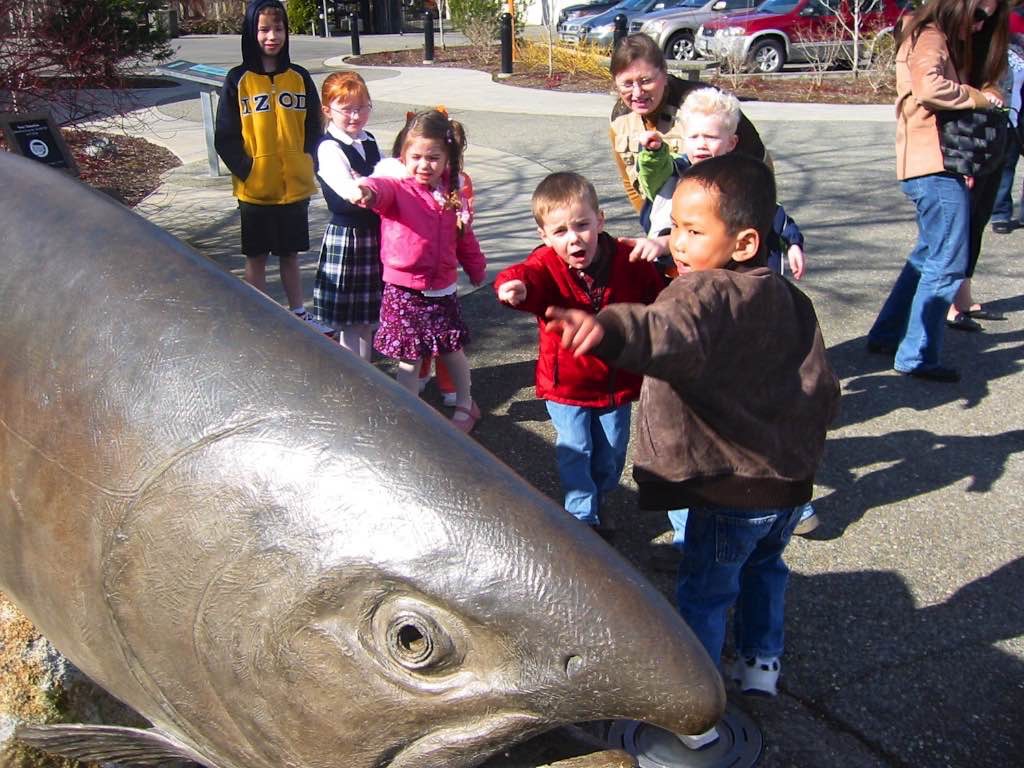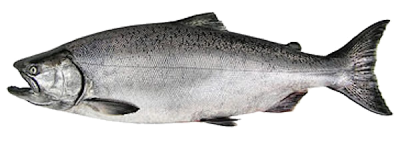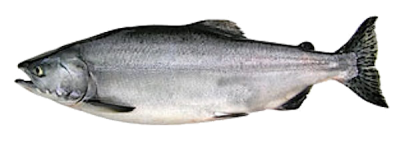Salmon are fascinating creatures with intricate life histories. At FISH we try to cultivate a sense of wonder about salmon. Teachers, we provide you with two avenues of online learning: 1) our Salmon in the Classroom Educator’s Guide (which we strongly encourage you to read and serve as your guide for classroom learning) and 2) this page, which is intended as a quick primer on salmon to get you started. The links that follow on this page provide bite-sized facts and descriptions of the behaviors, appearance and capabilities of our amazing friends.

The Quick Guide to Salmon
Laying & Covering Eggs
Laying and fertilizing eggs Early in spawning, as many as 1200 eggs may be released into the nest, the number decreasing in subsequent nests. As they are released, current eddies in the depression pull most eggs downward into the nest to less turbulent water where sperm has settled and where they become lodged in the […]
What’s a Redd?
Female Building a Redd Each species of salmon shows different preferences in terms of optimum spawning habitat. This ensures that available habitat is used efficiently with a minimum of competition. The redd is the general location selected by a female for laying eggs. Within that site, she may dig several nests and deposit eggs in […]
Spawning
Spawning Sockeye Salmon Salmon spawning is a remarkable phenomenon to behold. Generally, spawning is broken into three types of behavior: redd selection and nest building, courtship and mating, and nest closure. Although individual species differ in certain behaviors, a generalized pattern occurs with all salmon. Redd selection is the task of the female and is […]
Cool Facts About Salmon
Salmon display silvery colors at sea and vivid reds, greens, browns, and even purple in freshwater. These freshwater colors may become even more pronounced in males during mating or fighting rituals.
Young salmon moving to sea travel at night to avoid predators. They also drift backwards facing upstream which may allow them to continue feeding and also may provide better control in the downstream current.
Like many fish, salmon have 300 degree vision. It is only the area immediately behind them that they cannot see.
Salmon have an extremely keen sense of smell. Studies indicate that salmon can smell one part per million which translates to one drop in 250 gallons, hundreds of times more acute than that of dogs.
Salmon in their saltwater phase travel an estimated 18 miles a day, but they are capable of maintaining an average of 34 miles per day over long distances. Salmon often travel much more slowly to feed.
Salmon do not have ears. Instead they hear low frequency sound waves which vibrate through the water to a row of sensory pores, called lateral lines, on the sides of the salmon. Scientists believe lateral lines also may help salmon navigate in the ocean.
Only 2 (10%) of the eggs deposited in a gravel nest will survive to return to the spawning grounds as adults.
Humans have given many nicknames to salmon. Chum salmon are often called “dogs” because of the large canine teeth they develop during spawning. They are also called “calicos” because of their bright spawning colors. Spawning pink males develop a large humped back and are called “humpies.”
Salmon need cold, clean, well oxygenated water. Even salmon raised in hatcheries spend some portion of their lives in a river or stream. Without healthy watersheds, salmon cannot survive.
The oldest verified fossil for a freshwater version of the salmon is 50 million years old. Five to six million years ago salmon had fangs, weighed 500 pounds, and were ten feet long. The modern anadromous Pacific salmon emerged about two million years ago in the cold mountain streams of the Pacific Northwest.





